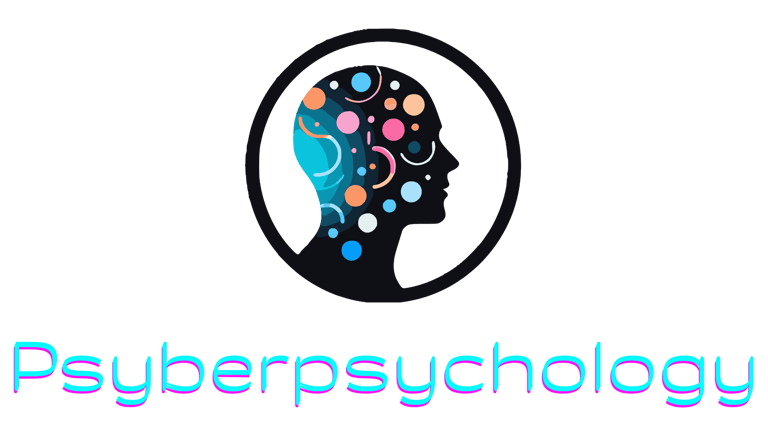Internet Addiction and Digital Dependency - Is It Real and How Does It Affect Us?
DIGITAL DETOX


Research consistently shows that people spend multiple hours daily on screens, with a significant portion dedicated to social media and entertainment. Studies indicate that most smartphone users check their devices hundreds of times throughout the day, often within minutes of their last check.
For many individuals, these patterns have progressed beyond convenience into genuine difficulty controlling usage even when it interferes with work, relationships, or sleep.
This scenario has become increasingly common in our hyperconnected world. While the internet has revolutionized how we work, learn, socialize, and entertain ourselves, it has also introduced a new frontier of potential dependency.
The concept of internet addiction—a pattern of excessive and problematic internet use that shares characteristics with substance and behavioral addictions—has gained significant attention among mental health professionals, researchers, and the public alike.
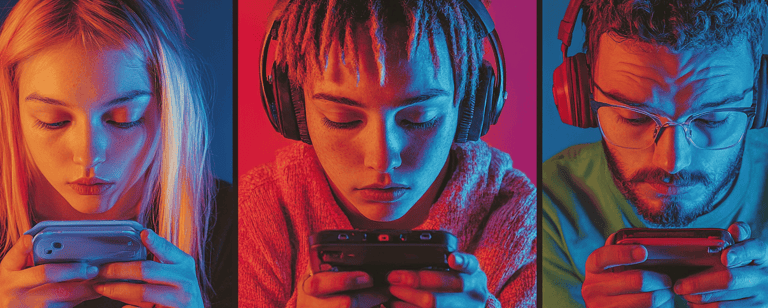

Is Internet Addiction Real? Understanding Compulsive Online Behavior


As our lives become increasingly digital, understanding the line between normal use and problematic dependency has never been more important.
This article explores the reality of internet addiction, its psychological underpinnings, impacts on mental and physical health, and strategies for maintaining a healthy relationship with technology in the digital age.
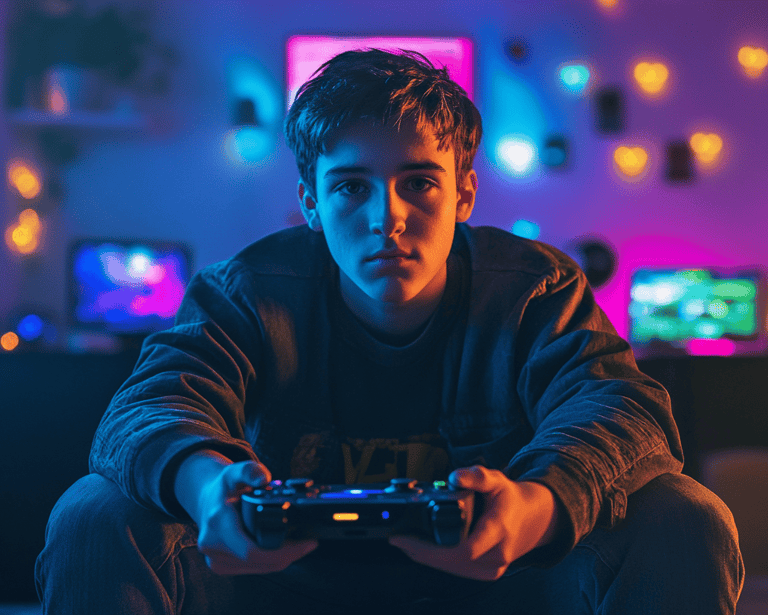

What Counts as Internet Addiction vs. Heavy Use?


Defining the Terms
The term "internet addiction" was first proposed by Dr. Kimberly Young in 1996, though it remains a debated construct in clinical psychology.
While not formally recognized as a distinct disorder in the Diagnostic and Statistical Manual of Mental Disorders (DSM-5), "Internet Gaming Disorder" is included in Section III as a condition warranting further research.
Similarly, the World Health Organization (WHO) has included "Gaming Disorder" in the International Classification of Diseases (ICD-11).
In practical terms, internet addiction refers to a pattern of internet use characterized by:
Loss of control over internet use
Preoccupation with online activities
Continued excessive use despite negative consequences
Development of tolerance (needing more time online)
Withdrawal symptoms when unable to access the internet
Interference with daily functioning and relationships


The Critical Distinction
Heavy internet use and addiction are separated by a crucial distinction. Heavy use refers to frequent online activity that may be extensive but doesn't negatively impact wellbeing or functioning.
For instance, a digital artist might spend 10+ hours daily online but maintain healthy relationships, physical health, and emotional wellbeing. Their internet use, while substantial, serves productive purposes and doesn't control their life.
In contrast, addiction involves compulsive use despite significant negative consequences. The person feels unable to control their usage, experiences distress when attempting to reduce it, and continues despite awareness of harm to their relationships, work, education, or health.


Contextual Factors
Several factors influence whether intense internet use becomes problematic:
Purpose of use: Work-related, educational, or creative purposes versus purely escapist motivations
User control: Ability to disconnect when necessary versus feeling compelled to remain connected
Displacement of activities: Whether online time replaces essential activities like sleep, exercise, or face-to-face interaction
Psychological profile: Pre-existing vulnerabilities such as depression, anxiety, or poor impulse control
Age and developmental stage: Adolescents and young adults may be particularly vulnerable due to ongoing brain development
According to behavioral addiction research, excessive internet use alone doesn't constitute addiction—the context and consequences are what determine whether usage has become truly problematic.


The Psychology of Compulsive Online Behaviors
Write your text here...
Neurological Reward Systems
At the core of internet addiction lies the brain's reward system. Digital activities trigger dopamine release—the neurotransmitter associated with pleasure and reinforcement.
However, unlike natural rewards that eventually lead to satisfaction, many digital platforms are designed to provide endless, variable rewards that keep users engaged.
This variable-ratio reinforcement schedule—similar to that used in gambling—is particularly effective at maintaining behavior.
When rewards are unpredictable (like notifications, likes, or in-game achievements), users check more frequently and for longer periods, creating powerful habit loops that can evolve into compulsions.






Common Forms of Digital Dependency
Social Media Addiction
Social platforms capitalize on our fundamental need for social connection and validation. Features like infinite scrolling, notifications, and "likes" create powerful feedback loops.
The unpredictable nature of responses to posts triggers dopamine surges, while features like "streaks" on platforms like Snapchat gamify social interaction to encourage daily use.
Research suggests that up to 5-10% of social media users exhibit addiction-like symptoms. Studies found that the anticipation of social media notifications activates the same brain regions as anticipation of monetary rewards.
The rise of short-form video platforms like TikTok and Instagram Reels has introduced new concerns about rapid-fire content consumption. These platforms use sophisticated algorithms that quickly learn user preferences and deliver highly personalized content, making it increasingly difficult to disengage.
The brief duration of each video (often under 60 seconds) creates a "just one more" effect that can lead to extended viewing sessions.
Gaming Addiction
Video games implement sophisticated reward structures through achievement systems, level progression, and social elements. Immersive games with no defined endpoints can be particularly habit-forming.
Massive multiplayer online games (MMOs) combine these elements with social obligations to one's gaming community, creating powerful hooks that can lead to problematic use.
The WHO estimates that 3-4% of gamers develop gaming disorder, with higher rates among adolescent males. The gaming landscape has evolved significantly with the introduction of live-service games, battle passes, and daily login rewards that encourage consistent engagement.
Mobile gaming has also expanded accessibility, with games available at any moment, blurring the boundaries between gaming sessions and daily life.
Cryptocurrency and NFT Obsession
A newer form of digital dependency has emerged around cryptocurrency trading and NFT (non-fungible token) markets.
The 24/7 nature of crypto markets, combined with extreme volatility and the fear of missing out on financial gains, can lead to compulsive checking behaviors, sleep disruption, and significant anxiety.
Online communities centered around crypto amplify these behaviors through constant speculation and hype cycles.
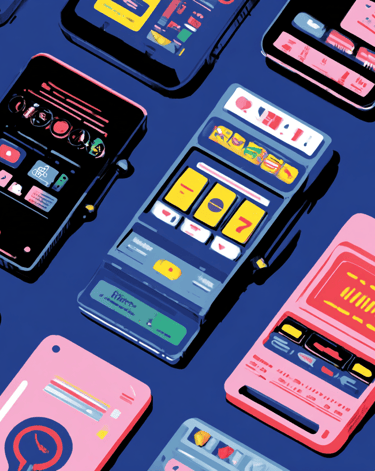

Compulsive Information Seeking
The constant stream of news, facts, and data available online can trigger compulsive checking behaviors. "Doomscrolling"—continuously consuming negative news—has emerged as a particular concern.
This behavior often stems from an attempt to regain a sense of control during uncertain times but paradoxically increases anxiety and stress.
The Role of Design
Many digital platforms employ "persuasive design" techniques explicitly aimed at maximizing engagement time:
Pull-to-refresh mechanisms that mimic slot machines
Autoplay features that remove natural stopping points
Algorithmic content selection that serves increasingly engaging material
Notification systems designed to prompt immediate attention
Social proof indicators that validate continued use
Technology insiders have observed that modern smartphones aren't passive tools awaiting use but active competitors for our attention.
Many tech platforms employ sophisticated psychological techniques specifically designed to capture and maintain user engagement, creating an inherently unbalanced dynamic where users must work against intentional design elements to maintain healthy usage patterns.
Signs, Symptoms, and Red Flags
Behavioral Indicators
Internet addiction typically manifests through several behavioral patterns:
Preoccupation: Constant thoughts about online activities when offline
Withdrawal: Irritability, anxiety, or restlessness when unable to use the internet
Tolerance: Needing to spend increasing amounts of time online to achieve satisfaction
Failed attempts to control use: Unsuccessful efforts to reduce or stop internet use
Loss of interest in offline activities: Diminished participation in previously enjoyed hobbies
Continued use despite problems: Persistent internet use despite awareness of physical or psychological problems
Deception: Lying to family members or others about the extent of internet use
Escape-motivated use: Using the internet to escape negative emotions or problems
Relationship conflicts: Arguments, tension, or neglect in relationships due to internet use
Risk to opportunities: Jeopardizing educational or career opportunities because of internet use
Recognizing Problematic Patterns
Problematic internet use can manifest in various ways that may be recognizable in everyday situations:
Regularly sacrificing sleep to engage in online activities, leading to chronic fatigue and work or academic performance issues
Consistently canceling social plans to remain online, or being unable to be present during social interactions due to constant device checking
Experiencing significant anxiety or panic when separated from devices or when internet access is unavailable
Allowing internet use to intrude on important life moments and relationships, despite repeated complaints from loved ones


Self-Assessment Questions
Consider asking yourself:
Do I feel anxious or irritable when unable to go online?
Have I tried to cut back on my internet use and failed?
Do I lose track of time when online, spending much longer than intended?
Have important people in my life expressed concern about my internet use?
Has my internet use negatively affected my work, studies, or relationships?
Do I go online to escape from problems or negative feelings?
Do I lie about or hide how much time I spend online?
Answering "yes" to multiple questions may indicate a concerning pattern of use that warrants further reflection or professional assessment.
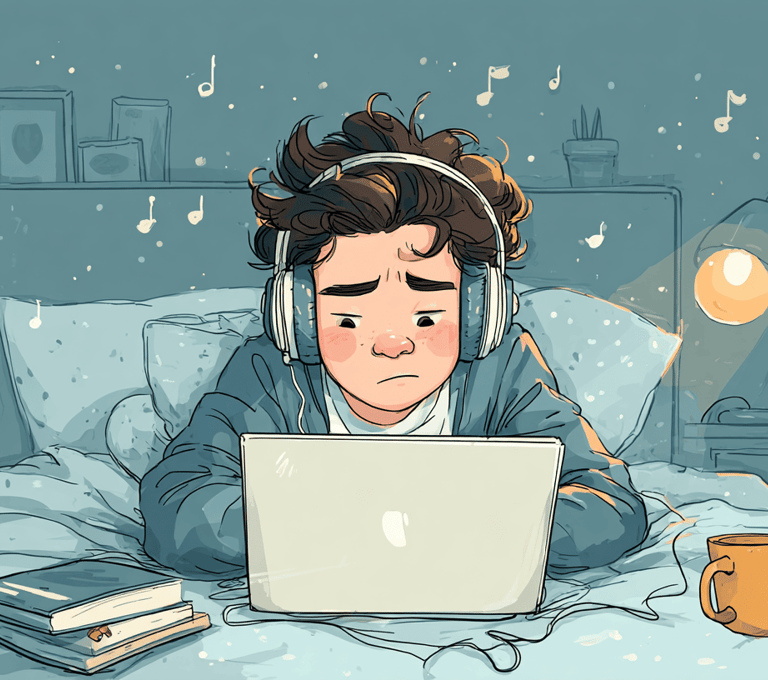

Psychological and Physical Effects
Mental Health Implications
Research has consistently linked problematic internet use with various mental health concerns:
Depression and Anxiety: A bidirectional relationship exists, where excessive internet use may exacerbate symptoms, while depression and anxiety may drive escape-motivated internet use.
Sleep Disturbances: Blue light exposure and stimulating content interfere with sleep onset and quality, contributing to insomnia and circadian rhythm disruptions.
Attention Problems: Constant task-switching and information overload may impair sustained attention and increase distractibility.
Cognitive Changes: Some research suggests heavy digital media use may alter cognitive processing, reducing deep reading capacity and analytical thinking.
Social Isolation: Despite the promise of connection, excessive internet use often correlates with increased loneliness and reduced face-to-face social skills.
Body Image and Self-Esteem Issues: Social media exposure, particularly to curated and filtered content, has been linked to increased body dissatisfaction, especially among young people. The constant comparison to idealized online personas can contribute to low self-worth and eating disorders.
Research has found that adolescents who spend extended periods on social media face elevated risks of developing mental health problems.
Studies examining the relationship between smartphone and social media adoption have identified correlations with increases in depression and anxiety among teenagers, particularly among adolescent girls.


Physical Health Consequences
The sedentary nature of prolonged internet use contributes to various physical health concerns:
Musculoskeletal Problems: "Tech neck," carpal tunnel syndrome, and back pain from poor posture
Visual Issues: Digital eye strain, dry eyes, and potentially increased risk of myopia
Metabolic Effects: Increased risk of obesity, type 2 diabetes, and cardiovascular problems linked to sedentary behavior
Sleep-Related Health Problems: Sleep deprivation contributes to impaired immune function, increased inflammation, and hormone dysregulation
Headaches and Migraines: Increased screen time correlates with higher frequency of headaches


Neuroplastic Changes
Emerging research suggests heavy internet use may actually reshape brain structure and function:
Reduced gray matter in prefrontal regions associated with self-control
Altered white matter integrity in pathways related to emotional processing
Changes in reward processing similar to those seen in substance addictions
Potential impacts on memory formation and consolidation
Neuropsychiatric research indicates that our current digital technology revolution is not only changing communication patterns but is rapidly altering the physical structure and function of our brains, particularly in areas related to attention, impulse control, and emotional regulation.


Treatment Options and Coping Strategies
Clinical Approaches
For severe internet addiction, several treatment modalities have shown promise:
Cognitive Behavioral Therapy (CBT): Helps identify and modify problematic thought patterns and behaviors related to internet use. CBT has the strongest evidence base for treating internet addiction.
Motivational Interviewing: Enhances motivation to change problematic internet use by exploring and resolving ambivalence.
Family Therapy: Particularly effective for adolescents, addressing family dynamics that may contribute to or result from excessive internet use.
Group Therapy: Provides peer support and reduces isolation, allowing individuals to learn from others with similar experiences.
Medication: In cases where comorbid conditions like depression or ADHD drive excessive internet use, medication may be helpful as part of comprehensive treatment.
Specialized treatment centers for internet addiction have emerged globally, particularly in countries like South Korea, China, and increasingly in the United States.
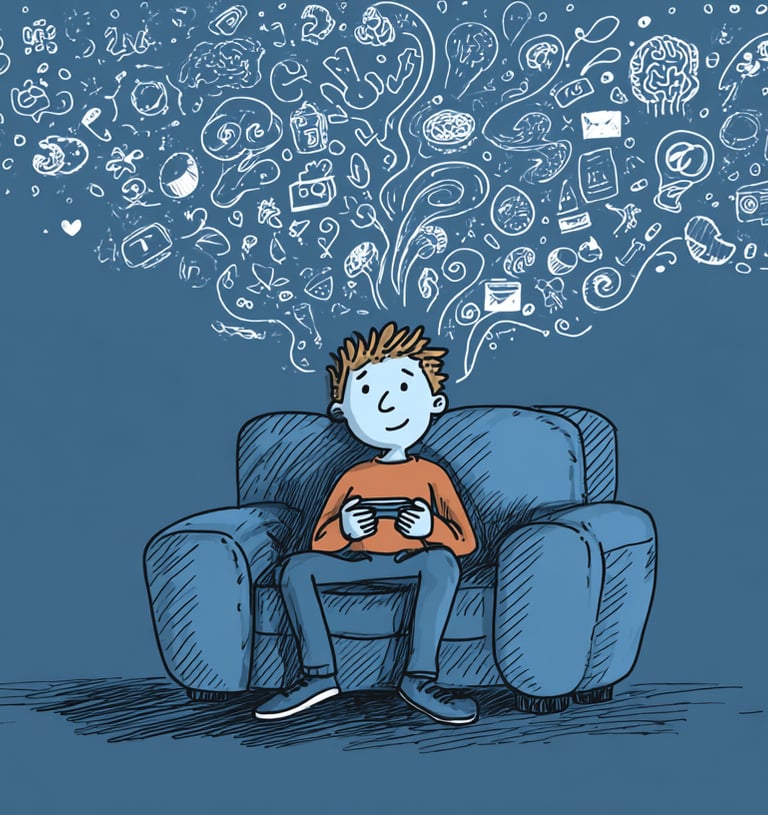

Self-Help Strategies
For those with milder forms of problematic use, self-directed approaches can be effective:
Digital Wellbeing Tools: Utilize built-in screen time trackers and app limits on smartphones
Environmental Modifications: Create tech-free zones in the home, particularly bedrooms
Schedule Restructuring: Plan specific times for internet use and offline activities
Mindfulness Practices: Develop awareness of urges to use technology without automatically acting on them
Digital Nutrition Approach: Focus on quality of online engagement rather than quantity
Replacement Activities: Rebuild offline interests and social connections
Accountability Partners: Enlist support from trusted friends or family members
Grayscale Mode: Converting phone displays to grayscale can reduce the visual appeal and dopamine-triggering effects of colorful apps and notifications
Notification Management: Disable non-essential notifications and use "Do Not Disturb" modes strategically
Physical Barriers: Keep phones in another room while sleeping, working, or spending time with family


Preventive Measures
For parents and educators concerned about preventing internet addiction:
Digital Literacy Education: Teach critical consumption of online content and awareness of persuasive design
Healthy Modeling: Demonstrate balanced technology use through personal example
Delayed Smartphone Access: Consider postponing full smartphone access until adolescence
Structure and Boundaries: Establish clear family rules around technology use
Emphasis on Purposeful Use: Encourage intentional, goal-directed internet use rather than passive consumption
Building Digital Balance
A framework for healthier digital habits includes:
Intentionality: Using technology purposefully rather than reactively
Mindfulness: Being fully present during both online and offline activities
Moderation: Finding sustainable balance without rigid restrictions
Control: Maintaining agency over when and how to engage with technology
Variety: Ensuring diverse activities both online and offline
Digital wellness experts suggest that the goal isn't complete technology abstinence but rather creating a relationship with digital devices that enhances rather than detracts from overall wellbeing and life satisfaction.




Conclusion
Internet addiction represents a complex interaction between technology design, individual vulnerabilities, and societal factors.
While not everyone who spends significant time online develops problematic use patterns, the growing prevalence of digital dependency warrants serious attention from individuals, families, healthcare providers, and technology companies alike.
The distinction between heavy use and addiction lies not in time spent online but in the relationship to that use—whether it enhances or diminishes overall life quality and functioning.
As digital technologies become increasingly integrated into daily life, developing healthy digital habits becomes not just personally beneficial but socially necessary.
Perhaps the most important question is not whether we use technology, but whether we use it intentionally—as a tool that serves our broader life goals rather than as an escape that diminishes our lived experience.
As you reflect on your own digital habits, consider: Is your relationship with technology enhancing your life and wellbeing, or has it begun to control aspects of your life in ways that concern you?
The answer may guide you toward either reassurance or a healthier digital balance that allows you to harness technology's benefits while minimizing its potential harms.


Doomscrolling and Digital Addiction
A revealing exploration of why we can't stop scrolling through negative news, how tech platforms fuel this addiction, and practical strategies to reclaim our digital wellbeing.


Digital Identity - How We Construct and Perform Ourselves Online
Examine how we craft our online identities, examining the psychological impact of digital self-presentation and the increasingly blurred boundaries between our virtual and authentic selves.


The Psychology of Online Communities - How Digital Tribes Shape Behavior and Belonging
This article examines how digital tribes fulfill our fundamental need for connection in modern society.
